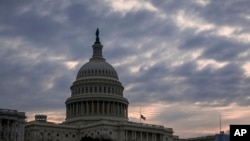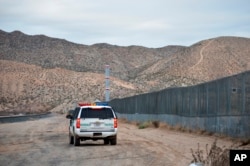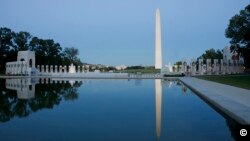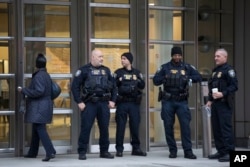Hundreds of thousands of federal workers woke to a partial government shutdown Saturday after Democrats refused to meet President Donald Trump’s demands for $5 billion to start erecting a border wall with Mexico.
Overall, more than 800,000 federal employees would see their jobs disrupted, including more than half who would be forced to continue working without pay.
What’s open and what’s closed
Social Security checks will still go out. Troops will remain at their posts. Doctors and hospitals will get their Medicare and Medicaid reimbursements. The U.S. Postal Service, busy delivering packages for the holiday season, is an independent agency and won’t be affected.
In fact, virtually every essential government agency, like the FBI, the Border Patrol and the Coast Guard, will remain open. Transportation Security Administration officers will continue to staff airport checkpoints.
The air traffic control system, food inspection, Medicare, veterans’ health care and many other essential government programs will run as usual. The Federal Emergency Management Agency can continue to respond to disasters.
Nearly all of the Department of Homeland Security’s 240,000 employees will be at work because they’re considered essential.
The Special Counsel’s Office, which is investigating potential ties between the Trump campaign and Russia, will not be affected by a shutdown.
Hundreds of thousands off the job
But hundreds of thousands of federal workers will be forced off the job, and some services will go dark. Even after funding is restored, the political repercussions could be enduring.
The Washington Monument and many other iconic park service attractions would close, as would museums along the National Mall. In the past, the vast majority of national parks were closed to visitors and campers, but during the last government shutdown in January the Interior Department tried to make parks as accessible as possible despite bare-bones staffing levels. It was not clear Monday if that effort will be repeated.
Spokeswomen for the Interior Department did not answer questions by email about the agency’s overall plans for a shutdown. Leadership at the agency is in flux, with Interior Secretary Ryan Zinke resigning effective Jan. 2 in the face of ethics investigations.
Federal workers still get paid — eventually
While they can be kept on the job, federal workers can’t get paid for days worked while there is a lapse in funding. In the past, however, they have been repaid retroactively even if they were ordered to stay home.
Federal workers are exempted from furloughs if their jobs are national security-related or if they perform essential activities that “protect life and property.”
According to a report by Democrats on the Senate Appropriations Committee, more than 420,000 federal employees deemed essential would continue to work without pay during a partial shutdown, including about 41,000 law enforcement and corrections officers and nearly 150,000 Homeland Security employees.
Meanwhile, more than 380,000 employees will be furloughed, including nearly all of NASA and Housing and Urban Development and 41,000 Commerce Department employees. About 16,000 National Park Service employees, 80 percent of the agency’s workforce, will be furloughed, and many parks will close. Some parks are closed for the winter.
Among those set to be furloughed: 52,000 staffers at the Internal Revenue Service, slowing analysis and collection of hundreds of thousands of tax returns and audits.
Shutdowns happen
Way back in the day, shutdowns usually weren’t that big a deal. They happened every year when Jimmy Carter was president, averaging 11 days each. During Reagan’s two terms, there were six shutdowns, typically just one or two days apiece. Deals got cut. Everybody moved on.
Before a three-day lapse in January, caused by Democrats’ insistence that any budget measure come with protections for young immigrants known as “dreamers,” the most recent significant shutdown was a 16-day partial shuttering of the government in 2013. That one came as tea party conservatives tried to block implementation of Obama’s health care law. The government also shut down for a few hours last February amid a partisan dispute over deficit spending.























